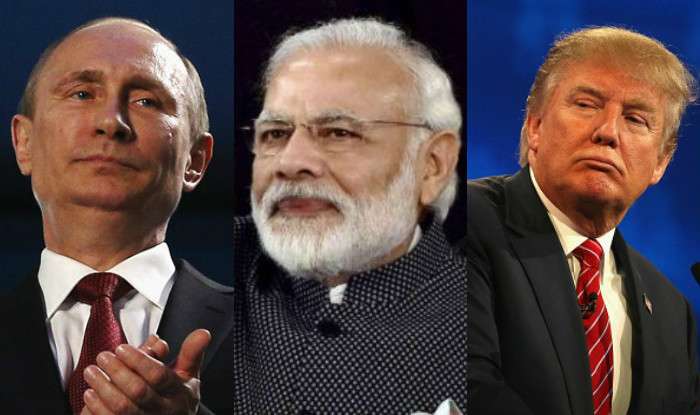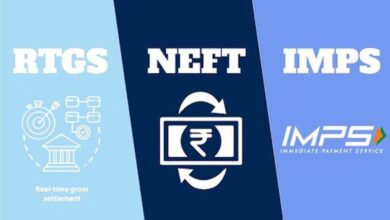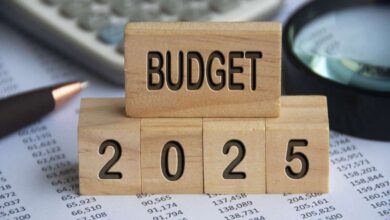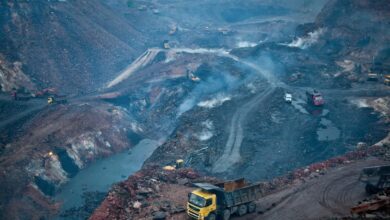The Golden Handshake, Russia-India-United States, If Donald Trump Wins, Will Personal Relations Soar Over Historic Enmity Even As A Trump Win Is Making Politicians Back Home Grow More Anxious?

When Old Friends Meet, Donald Trump, Vladimir Putin, And Modi
When Indian Prime Minister Narendra Modi meets world leaders, his ‘jadoo ki jappi’ is fully displayed. Yet his embrace last week with Russian President Vladimir Putin in Moscow has stirred firm public pushback from both Washington and Kyiv.
In a series of statements over several days, US officials criticized Modi’s visit to Russia, the first since Putin launched a full-scale war on Ukraine in February 2022.
The US National Security Adviser cautioned that strong ties with Russia were a “bad bet” for India.
State Department spokesperson Matthew Miller expressed concern about India’s relations with Russia.
Additionally, Eric Garcetti, the US ambassador to India, warned New Delhi not to take its friendship with Washington “for granted”.
Ukrainian President Volodymyr Zelenskyy was more direct.
He referred to the deadly missile attack on Ukraine’s largest children’s hospital the day before Modi’s Moscow visit.
“It is a huge disappointment and a devastating blow to peace efforts to see the leader of the world’s largest democracy hug the world’s most bloody criminal in Moscow on such a day,” he wrote on X.
So, did India miscalculate the geopolitical response to Modi’s trip? Has the visit to Moscow and the public display of warmth towards Putin damaged India’s relations with the US? And why do ties with Russia matter enough for India to take that gamble after years of investing in relations with the US?

The Donald ‘Trump’ Card
Analysts say the answer lies in a combination of history, New Delhi’s confidence in its ability to juggle multiple complex relations, and a bet that former US President Donald Trump might return to power and soften Washington’s tough stance against Russia.
On Saturday, after a sniper positioned on a roof outside a Trump rally in Pennsylvania struck the former president with a bullet, killing another person and wounding two others, a volley of reactions tumbled in from around the world.
Among them was an X post by Modi, who condemned the attack, describing Trump as “my friend”. The two leaders had previously held joint public events in Houston and the Indian city of Ahmedabad.
It seems that the Modi administration is increasingly convinced that Trump might return to power in November.
The ex-president leads incumbent Joe Biden in polls in several swing states, and the image of Trump rising after being shot, fist in the air, blood streaking down his face, is expected to solidify his advantage over Biden.
“The election to the post of US president seems a foregone conclusion for Donald Trump and PM Modi will be happy about it,” the Indian official said.
Analysts suggest that a Trump win would help India by easing the pressure on New Delhi to turn away from Moscow.
“A second Trump administration, almost certainly, will care less about the optics of Russia-India ties,” said Christopher Clary, an assistant professor in political science at the University of Albany and a non-resident fellow with the Washington-based Stimson Center’s South Asia program.
In his first term as president, Trump focused US strategic attention on Washington’s rivalry with Beijing, rather than on Moscow – a worldview that aligns with India’s. New Delhi also views Beijing as its principal threat.

Donald Trump and Putin
Donald Trump’s admiration for Putin dates back to before his presidential run.
So, what is the real story of Donald Trump and Russia?
The answer remains unclear. However, it is evident that a complex web of connections—some public, some private, some clear, some murky—exists between Trump, his associates, and Russian President Vladimir Putin.
There are dozens of links, including meetings between Russian officials and members of Trump’s campaign and administration; his daughter’s ties to Putin’s friends; Trump’s 2013 visit to Moscow for the Miss Universe pageant; and his short-lived mixed martial arts venture with one of Putin’s favorite athletes.
The solid lines mark established facts, while dotted ones represent speculative or unproven connections.
Throughout the 2016 presidential election, Trump not only refrained from criticizing Russian President Vladimir Putin but was also friendly and accommodating in his remarks. Trump called Putin “highly respected.”
More recently, Trump put the U.S. on equal moral footing with Russia when responding to Bill O’Reilly’s question about Putin being a “killer,” saying, “We’ve got a lot of killers… you think our country’s so innocent?” This false moral equivalence is unprecedented for a U.S. president.
Trump has harshly criticized NATO, stating that only the allies that contributed equally to the alliance deserved protection from the United States.
Though these remarks were softened by British Prime Minister Theresa May, who claimed that Trump fully supports NATO, it remains unclear how supportive he will be of NATO allies like the Baltic states in light of his relationship with Russia.
Trump has also surrounded himself with people who do business with and are sympathetic to Russia.
The New York Times reported that members of Trump’s 2016 campaign and other Trump associates had frequent contact with senior Russian intelligence officials throughout the campaign.
Why Is It a Cause of Concern for America at Large?
According to most American politicians, this concern stems from either poor judgment or deeper personal, financial, or political links between President Trump and Russia.
It is unusual for the leader of our country to have extensive ties to a foreign government that has sought to undermine democracies worldwide.

India and Russia
India-Russia relations have a long history.
Russia, the successor of the Soviet Union with which India had close relations during the Cold War, has maintained strong ties with New Delhi.
Historically, Russia has been the largest supplier of weapons and other defense equipment to India, including MIG and Sukhoi fighter jets and, more recently, S-400 anti-missile defense systems.
Since the start of Russia’s war in Ukraine, India has dramatically increased its purchase of Russian crude oil. Today, Russia is India’s biggest supplier of oil, leading to a surge in India-Russia trade from around $10 billion a year to $63 billion.
In the West, India has faced criticism for these oil purchases, which are alleged to help finance Russia’s war. India has rejected the criticism, arguing that by buying Russian oil the West no longer wants, it is helping to stabilize global crude prices.
At the same time, India has strengthened ties with the West, especially the US, whose support it sees as essential to countering the perceived threat from China’s rise.
India’s defense dependence on Russia is decreasing as it buys more new weapons systems from the US or European manufacturers.
India insists it is exercising its strategic autonomy.
However, speaking in Kolkata last week, US ambassador Garcetti pushed back, stating, “there is no such thing as strategic autonomy during a conflict,” referring to the war in Ukraine.
Modi’s visit to Russia also coincided with Zelenskyy’s arrival in Washington, DC to attend the NATO summit.
This timing made the optics of Modi’s trip problematic from the US perspective, where Zelenskyy is regarded as a hero, noted Seema Sirohi, a Washington, DC-based journalist and analyst.

Has India Crossed a ‘Red Line’?
The Russia trip coincided with other sources of friction between India and the US.
US prosecutors allege that an Indian government agent tried to orchestrate the assassination of Sikh separatist Gurpatwant Singh Pannun, a US national who holds dual citizenship with Canada.
In June, the Czech Republic extradited to the US the Indian man who US prosecutors claim was trying to hire hitmen for the job.
In his comments in Kolkata, Garcetti referred to US concerns about India’s civil rights landscape—many rights groups have accused the Modi government of targeting critics.
The US Commission on International Religious Freedom (USCIRF) has listed India as a “country of particular concern” for the past five years, claiming that New Delhi is guilty of “engaging in and tolerating systematic, ongoing, and egregious religious freedom violations.”
Still, analysts say that India and Modi have enough leverage to weather these tensions. Despite the poor optics of Modi’s Russia visit, those familiar with the situation in the US would have been “least surprised” by the trip, said Clary.
“The strategic basis for the [India-US] relationship is sound and Modi’s visit does not undercut that basis,” he said.
Days before flying to Moscow, Modi skipped the annual leaders’ summit of the Shanghai Cooperation Organisation, led by China and Russia.
The Indian government official, who spoke on condition of anonymity, said New Delhi is also expected to host a summit of the Quad later this year.
China views the Quad grouping of democracies in the Asia Pacific—Australia, India, Japan, and the US—as a challenge to its rise.
Later this year, the Russian city of Kazan will also host a summit of the BRICS grouping.
The BRICS, consisting of Brazil, Russia, India, China, and South Africa, has now expanded to include Saudi Arabia, Egypt, Iran, the United Arab Emirates, and Ethiopia.
The government official said whether Modi returns to Russia for a second time in three months or skips that meeting could indicate how much India is willing to test its ties with the US.

Why Are the United States and the World Worried?
Opinion polls conducted since the weekend suggest Donald Trump’s narrow escape from the attempt on his life in Pennsylvania has increased the likelihood of his return to the White House.
Until now, little attention has been paid to what a second Trump presidency would mean for the US and the global economy. That will now change.
Many Voice that the world needs a period of stability after the repeated blows of recent years; if Trump avenges his 2020 defeat by Joe Biden, it would mean the opposite.
There are other reasons to be anxious about a second Trump presidency, as most think anyone wondering about the next big economic shock after the pandemic and the war in Ukraine need look no further than the frontrunner to lead the world’s largest economy in six months.
In its latest health check on the global economy, the IMF highlighted the risks of big swings in economic policy due to elections this year. While it did not mention the US by name, the implication was clear. Unaffordable tax cuts could lead to bigger debt problems, higher long-term interest rates, and increased protectionism.
The IMF stated: “Trade tariffs, alongside a scaling up of industrial policies worldwide, can generate damaging cross-border spillovers, as well as trigger retaliation, resulting in a costly race to the bottom.”
Trump’s economic strategy is highly protectionist, incoherent, and dangerous. He appears to believe that the tariffs he plans to impose on goods entering the US from China (and other countries) will pay for cuts in income tax.
In reality, tariffs mean higher prices for US consumers, which will hurt those on low and middle incomes the most. The tax cuts will mostly benefit corporations and wealthier individuals.
There are several dangers, as many point out –
First, there is the risk of a full-blown trade war with China. Higher import prices could drive up US inflation, leading to higher interest rates. Tough immigration curbs could reduce labor supply and add upward pressure on wages.
Finally, there are likely consequences if Trump pursues his isolationist diplomatic policy: more expensive commodities and more jittery financial markets.
Trump prefers a weak dollar, but the dollar has historically strengthened during times of global instability, which a Trump presidency would likely increase.
The possible outcomes are obvious: stagflation, attempts to strong-arm the Federal Reserve into cutting interest rates, a bigger crisis for heavily indebted poor countries that have borrowed in dollars, and the further retreat of globalization.
This does not even consider the risk of the cold war with China turning hot.
Pressure was already mounting on Biden to withdraw from the race before the Pennsylvania shooting, and he was already facing a tougher struggle than expected six months ago. The US was booming, but it is now slowing down, and unemployment is rising. This is never a good sign for incumbents in the Oval Office.
Despite this, the US has been the best-performing economy in the G7 since the end of the Covid pandemic. Inflation rose, as it did worldwide, in 2021 and 2022, but not to the levels seen in Europe.
Biden has delivered on infrastructure and boosted manufacturing. The subsidies in the Inflation Reduction Act represent a more interventionist industrial strategy designed to stimulate green growth. He has delivered for working Americans.

However, Biden faces a similar problem to what Rishi Sunak had during the UK general election: voters feel poorer even though they are better off. In the crucial swing states, Trump is ahead.
These leads are not insurmountable, and in normal circumstances, a sitting president would still be reasonably confident of victory at this stage of the campaign. But these are not normal times.
Trump has successfully convinced many voters that the US is doing worse than it actually is. He recognized the potential to tap into the discontent of hollowed-out middle America long before his political opponents. That sense of decline lives on, especially among Republicans.
Americans are more positive about their own finances than about the economy in general.
The current economic slowdown, driven by higher interest rates, makes it harder for Biden to counter Trump’s narrative that things have worsened since he was defeated in 2020.
The Fed appears to be gearing up to cut interest rates in September, but by then it may be too little, too late for Biden.
The state of the economy is no longer Biden’s biggest problem. Despite rising unemployment figures, the jobless rate remains low by historical standards.
Voters are concerned about whether Biden is fit to be president now, let alone for another four years, and the indications are that he is not.
Mistaking Volodymyr Zelenskyy for Vladimir Putin at last week’s NATO summit was merely the latest damaging gaffe.
Trump is not exactly a model of coherence either, but that’s not the point. To many Americans, he appears more capable than Biden, especially after last month’s disastrous head-to-head debate.




